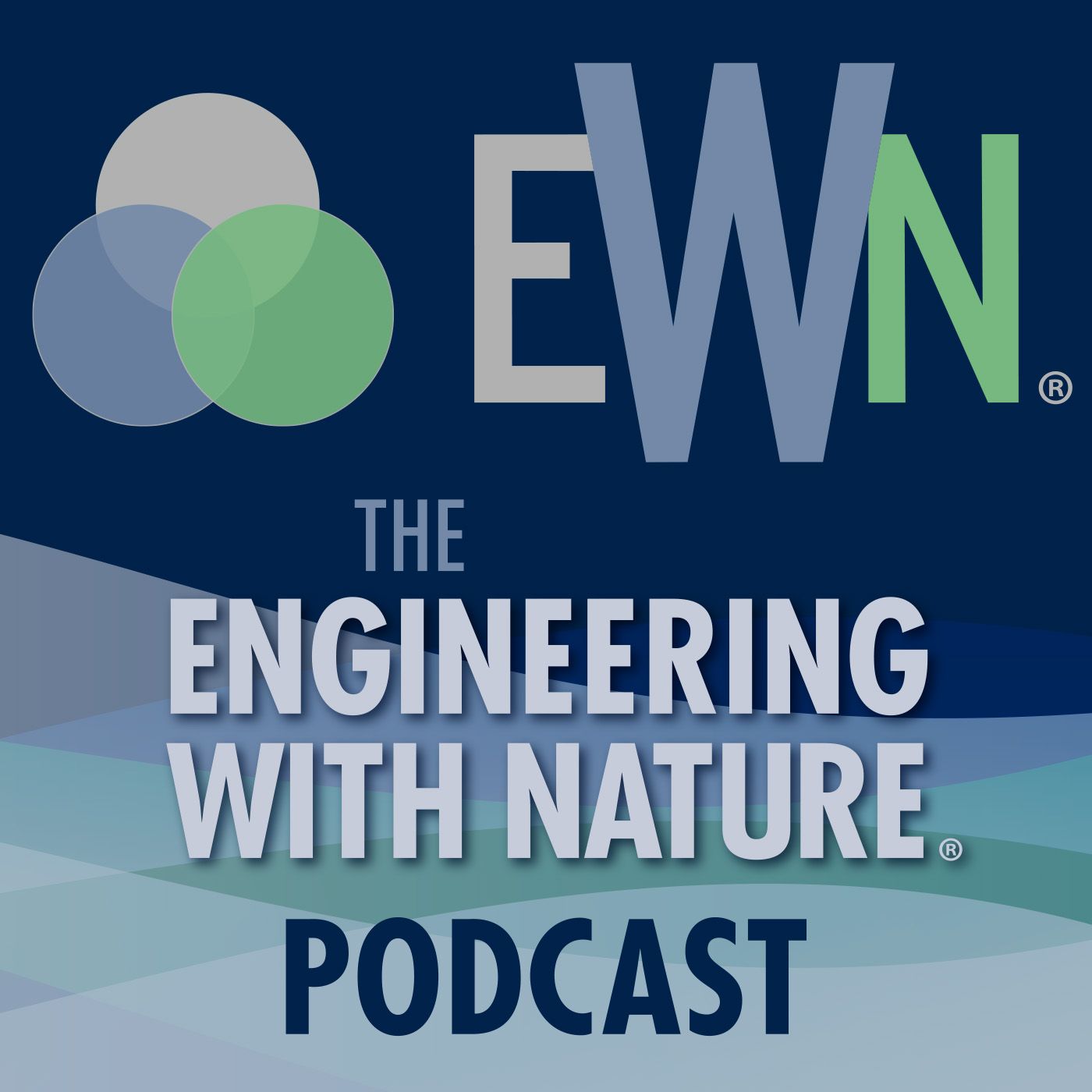EWN Atlas 3 Launch Coming Soon – 58 Inspiring NBS Projects
Description
Innovation and collaboration are cornerstones of Engineering With Nature (EWN). Sharing projects, demonstrating outcomes, and inspiring practitioners around the world is an important part of advancing EWN. The EWN Atlas series, initiated in 2018, has been key to showcasing the incredible work happening around the world. Season 7, Episode 5, kicks off the launch of EWN Atlas, Volume 3. Host Sarah Thorne is joined by cohost Burton Suedel, Research Biologist at the Engineer Research and Development Center, USACE, and Zelini Hubbard, Senior Project Manager at Anchor QEA and Project Manager for Atlas 3.
The EWN Atlas series demonstrates the power of EWN in action, highlighting projects that exemplify EWN concepts, principles, and practices. Each Atlas is organized in chapters, presenting projects in various environmental contexts—beaches and dunes, wetlands, islands, reefs, riverine systems, and floodplains—as well as chapters on specific project types, such as the use of vegetation and natural materials, and environmental enhancements of existing infrastructure. Sarah spoke with five contributors to Atlas 3 whose projects exemplify the quality of EWN projects being implemented around the world:
Cathy Lear is a Senior Habitat Biologist at Clallam County. The Lower Dungeness River Project she led is in Clallam County, WA. This project incorporated nature-based solutions (NBS) to restore a floodplain.
Mary Kate Brown is Assistant Coastal Programs Director for The Nature Conservancy in Alabama. She talks about how the Lightning Point Restoration Project in Bayou La Batre, AL, used green and gray infrastructure to revitalize a culturally important shoreline.
Samantha Belcik is a Biologist and Planner with the Chicago District, USACE. She describes the Fort Sheridan Project in Lake County, IL, which used historical native plant ecotypes and natural processes to restore a coastal ecosystem.
Zoe Elliott Perkins is a Senior Coastal Engineer on the Beaches Team for the City of Gold Coast in Queensland, Australia. She was part of the team on the Palm Beach Artificial Reef Project in Palm Beach, Queensland, Australia, which constructed an artificial reef to provide coastal protection and recreational resources.
David Johnston is a Project Engineer and Acting Team Lead in the Waterways Section of the USACE Huntington District. He led the Ohio River Bonanza Bar Project in Portsmouth, OH, which used dredged material beneficially to create ecological habitats and restore the historical footprint.
Burton and Zelini hope Atlas 3 gets wide use. As Zelini notes, “All 58 projects really do provide interesting examples of how NBS are being applied to a broad range of challenges. I think it’s a real feat that the work of so many has been distilled down into a digestible and readable document.” Burton agrees, adding, “What we’re striving to do is to share best practices worldwide, inspire actions in others, foster the confidence in our collective vision and encourage others to incorporate NBS into their infrastructure projects.”
Jeff King, Lead of the EWN Program, notes that: “Atlas 3 really reflects the best of the best work being done by colleagues across USACE and around the world.” Jeff thanks the entire team that worked on Atlas 3, and all the contributors and adds, “I’d like to personally invite all our listeners to check out Atlas 3, and all of the wonderful work being done—it will be available in May 2024. I hope all our listeners and readers will be inspired by the projects we’re featuring.” For more information and resource links, please visit the EWN Podcast page on the EWN website at...
More Episodes
In Season 8, Episode 3, host Sarah Thorne and Amanda Tritinger, Deputy National Lead of the Engineering With Nature (EWN) Program, US Army Corps of Engineers (USACE), are joined by Brian Davis, Associate Professor of Landscape Architecture at the University of Virginia (UVA), and Cathy Johnson,...
Published 10/22/24
Published 10/22/24
In Season 8, Episode 2, host Sarah Thorne and Jeff King, National Lead of the Engineering With Nature (EWN) Program, USACE, welcome back Dr. Christopher Lemon, a physician and Assistant Professor, Department of Emergency Medicine at Johns Hopkins Medicine; Faculty Codirector of Clinical Programs...
Published 10/08/24


